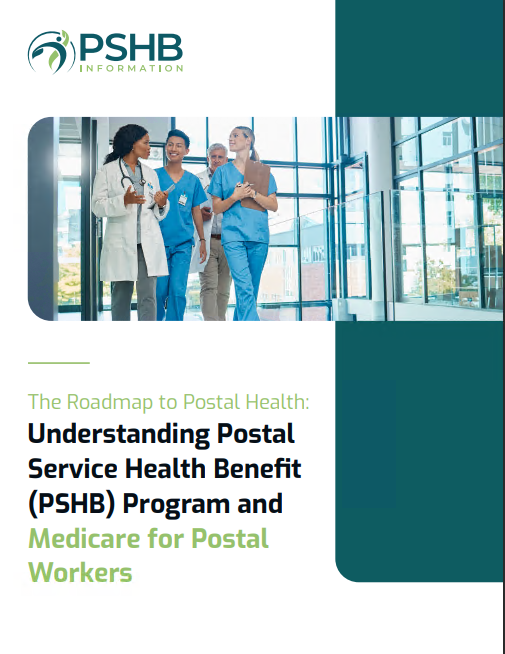Key Takeaways
-
The transition to the Postal Service Health Benefits (PSHB) Program in 2025 introduces significant changes, including Medicare Part B requirements and altered enrollment processes.
-
Understanding your options and timelines is critical to maintaining uninterrupted health coverage for you and your family.
A New Chapter in USPS Health Benefits: What’s Changing?
The Postal Service Health Benefits (PSHB) Program marks a major shift for USPS employees and retirees starting in 2025. If you’ve been accustomed to the Federal Employees Health Benefits (FEHB) Program, this transition may seem overwhelming. Let’s break it down so you’re fully prepared for what lies ahead.
Transitioning from FEHB to PSHB
Starting January 1, 2025, USPS employees and annuitants will no longer be covered under FEHB. Instead, you must enroll in a PSHB plan to maintain health benefits. This change is mandatory, but automatic enrollment ensures a smoother transition for most.
For employees currently enrolled in an FEHB plan, you’ll be moved to a corresponding PSHB plan. However, Open Season—running annually from mid-November to mid-December—is your chance to review your options, make changes, or update your family’s coverage.
Medicare Integration: A Game Changer for Retirees
One of the most significant shifts involves Medicare. If you’re a Medicare-eligible USPS retiree, you must enroll in Medicare Part B to maintain PSHB coverage. Exceptions apply, particularly if you retired before January 1, 2025, and are not currently enrolled in Part B. Coordination with Medicare aims to reduce out-of-pocket costs, but it’s essential to understand how this impacts your overall expenses and coverage.
Timeline to Note
-
Now: Review communications about PSHB and your new plan options.
-
November 2024: Open Season for PSHB enrollment begins.
-
January 1, 2025: PSHB coverage officially replaces FEHB for USPS employees and annuitants.
How Will This Affect Your Coverage?
With the introduction of PSHB, some aspects of your coverage will remain familiar, while others will change significantly. Here’s what to expect.
Prescription Drug Coverage Updates
Medicare-eligible enrollees will automatically receive prescription drug benefits through a Medicare Part D Employer Group Waiver Plan (EGWP). This means enhanced savings for those on regular medications, although it requires coordination with your PSHB plan.
Premium Contributions and Cost Sharing
While premiums may vary, the government’s contribution toward your plan remains similar to FEHB. However, additional costs like Medicare Part B premiums may increase your monthly expenses. Understanding these changes will help you budget effectively.
Enhanced Benefits with Medicare Coordination
Many PSHB plans offer supplemental benefits for those enrolled in both Medicare and PSHB, such as Part B premium reimbursements or waived deductibles. Take advantage of these perks to maximize your savings.
Preparing for Open Season
Open Season is your opportunity to make informed decisions about your health coverage. Here’s how to prepare:
Review Your Current Coverage
Assess your current FEHB plan to determine if the automatically assigned PSHB plan meets your needs. Changes in provider networks, coverage options, and costs should all factor into your decision.
Compare Plans
PSHB offers a variety of plan options tailored to USPS employees and retirees. During Open Season, use online tools to compare premiums, deductibles, copayments, and benefits across available plans. This ensures you select the plan that best suits your health and financial situation.
Verify Medicare Enrollment
If you’re Medicare-eligible, confirm your enrollment in Part B. Missing this step could lead to penalties or disruptions in your PSHB coverage. If you’re newly eligible for Medicare, consider enrolling during your Initial Enrollment Period (IEP) to avoid late enrollment penalties.
Update Dependent Information
Ensure all eligible dependents are accurately listed on your plan. Family coverage requires timely updates to avoid losing benefits for your spouse or children.
Navigating Medicare Part B Requirements
For Medicare-eligible retirees, enrolling in Part B is a cornerstone of the new PSHB structure. Here’s what you need to know:
Understanding Part B Costs
The standard Medicare Part B premium in 2025 is $185 per month. Higher-income individuals may pay more due to the Income-Related Monthly Adjustment Amount (IRMAA). While this is an additional cost, it’s often offset by lower out-of-pocket expenses within PSHB plans.
Enrollment Deadlines
Medicare’s General Enrollment Period runs from January 1 to March 31 annually, with coverage starting July 1. Special Enrollment Periods may apply if you’re transitioning from active employment to retirement.
Avoiding Late Penalties
Delaying Part B enrollment can result in lifelong penalties. These add 10% to your premium for every 12-month period you were eligible but did not enroll.
Special Considerations for Retirees
Retirees face unique challenges and opportunities under PSHB. Let’s address some key points:
Financial Planning for Dual Coverage
Balancing Medicare premiums with PSHB costs requires careful budgeting. Many retirees find the coordination between Medicare and PSHB reduces overall healthcare expenses despite the added Part B premium.
Understanding EGWP Benefits
The Medicare Part D EGWP provides a seamless way to manage prescription drug costs. For retirees, this means predictable out-of-pocket expenses for medications and access to a robust pharmacy network.
Spousal and Family Coverage
If your spouse or dependents are not Medicare-eligible, they’ll remain covered under the PSHB plan. Ensuring your plan choice accommodates their needs is critical to maintaining comprehensive family coverage.
Qualifying Life Events and Coverage Adjustments
Life doesn’t stand still, and neither do your health coverage needs. The PSHB program allows changes outside Open Season for Qualifying Life Events (QLEs).
Examples of QLEs
-
Marriage, divorce, or legal separation
-
Birth or adoption of a child
-
Loss of other health coverage
How to Report a QLE
Notify your HR department or benefits administrator promptly after a QLE. Changes must typically be made within 60 days of the event.
Staying Informed and Proactive
The transition to PSHB doesn’t have to be stressful. Here’s how you can stay ahead:
Regular Updates
Keep an eye on USPS communications for the latest updates on PSHB. Attend informational webinars or sessions to clarify doubts and understand the program’s nuances.
Resources to Utilize
Leverage online plan comparison tools, benefits guides, and Medicare resources. These tools are invaluable for making informed choices.
Ask Questions
Don’t hesitate to reach out to your benefits administrator with questions about PSHB, Medicare integration, or specific plan options. Proactive inquiries ensure you’re fully prepared for the transition.
Charting Your Path Forward with PSHB
The shift to PSHB represents a significant change, but it also offers opportunities to enhance your healthcare coverage. By understanding the new structure, reviewing your options, and preparing for Open Season, you can make confident decisions that benefit you and your family in the long run.







